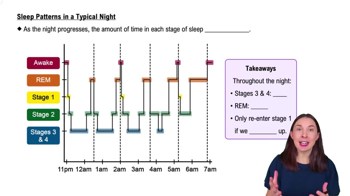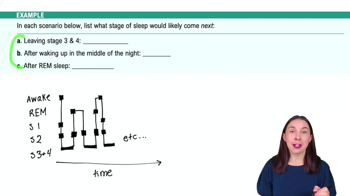Table of contents
- 1. Introduction to Psychology1h 43m
- 2. Psychology Research2h 20m
- 3. Biological Psychology2h 41m
- 4. Sensation and Perception28m
- 5. Consciousness and Sleep32m
- 6. Learning41m
- 7. Memory34m
- 8. Cognition37m
- 9. Emotion and Motivation35m
- 10. Developmental Psychology33m
- 11. Personality48m
- 12. Social Psychology41m
- 13. Stress and Health41m
- 14. Psychological Disorders44m
- 15. Treatment47m
5. Consciousness and Sleep
Sleep
Struggling with Psychology?
Join thousands of students who trust us to help them ace their exams!Watch the first videoMultiple Choice
The proposal that we experience emotion first with physical arousal (e.g., increased heart rate, shaky hands), which then leads to awareness of the emotion, is the basis of the
A
cognitive arousal theory.
B
common sense theory of emotion.
C
James-Lange theory of emotion.
D
Cannon-Bard theory of emotion.
 Verified step by step guidance
Verified step by step guidance1
Identify the key components of the problem: the sequence of experiencing emotion and physical arousal.
Understand the James-Lange theory of emotion, which posits that physiological arousal occurs first, followed by the emotional experience.
Differentiate between the James-Lange theory and other theories of emotion, such as the Cannon-Bard theory, which suggests that emotion and physiological responses occur simultaneously.
Consider the role of cognitive processes in the experience of emotion, as suggested by cognitive arousal theories, which involve interpretation of arousal before experiencing emotion.
Review the common sense theory of emotion, which typically suggests that we first experience emotion, which then leads to physiological responses, contrasting with the James-Lange theory.

 3:25m
3:25mWatch next
Master Circadian Rhythms with a bite sized video explanation from Hannah Gordils
Start learningRelated Videos
Related Practice


































































































![Race, Genes and IQ Differences | Bret Weinstein [Mini Clip]](https://img.youtube.com/vi/IztL_m3pd70/mqdefault.jpg)



































































































